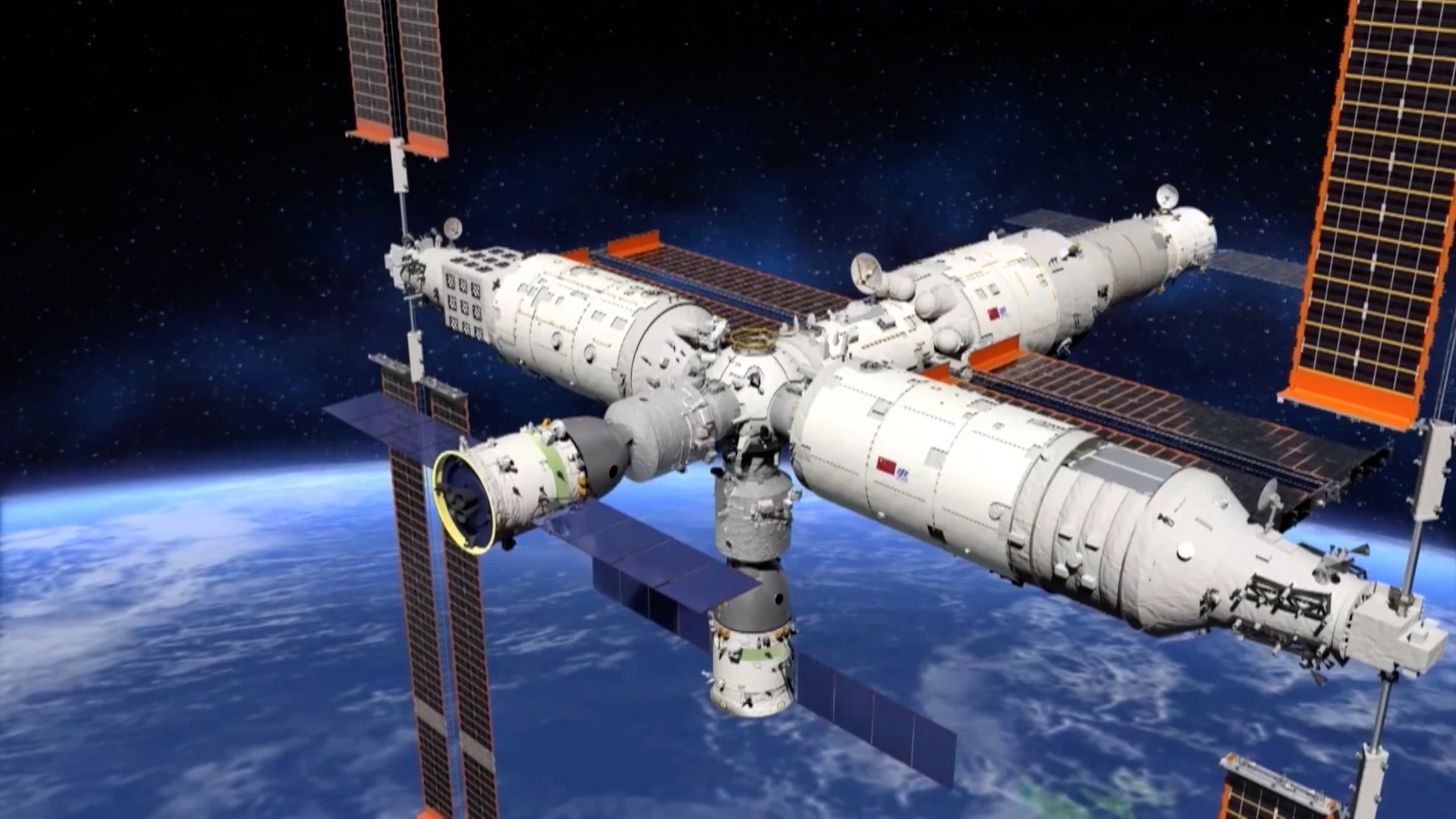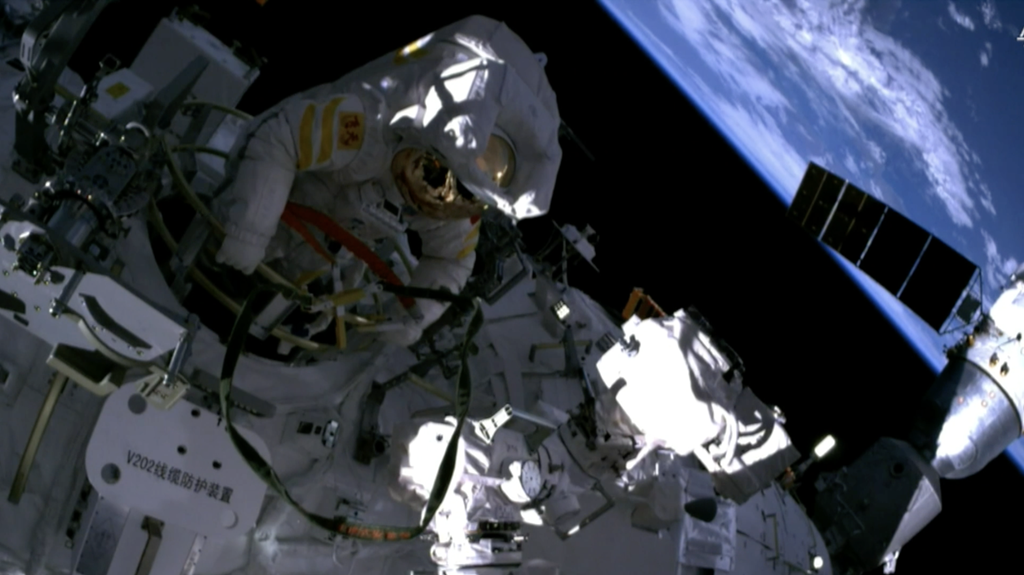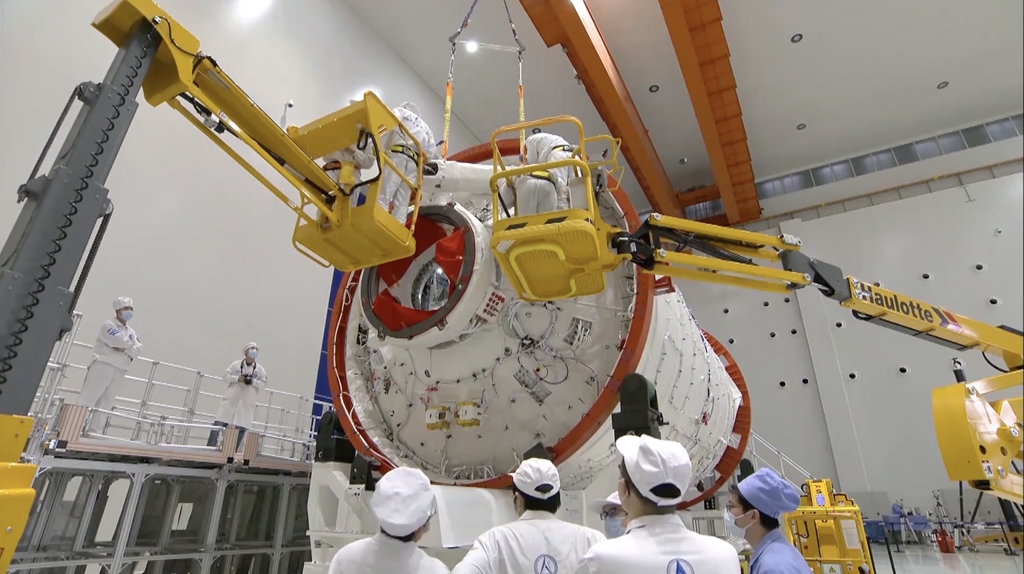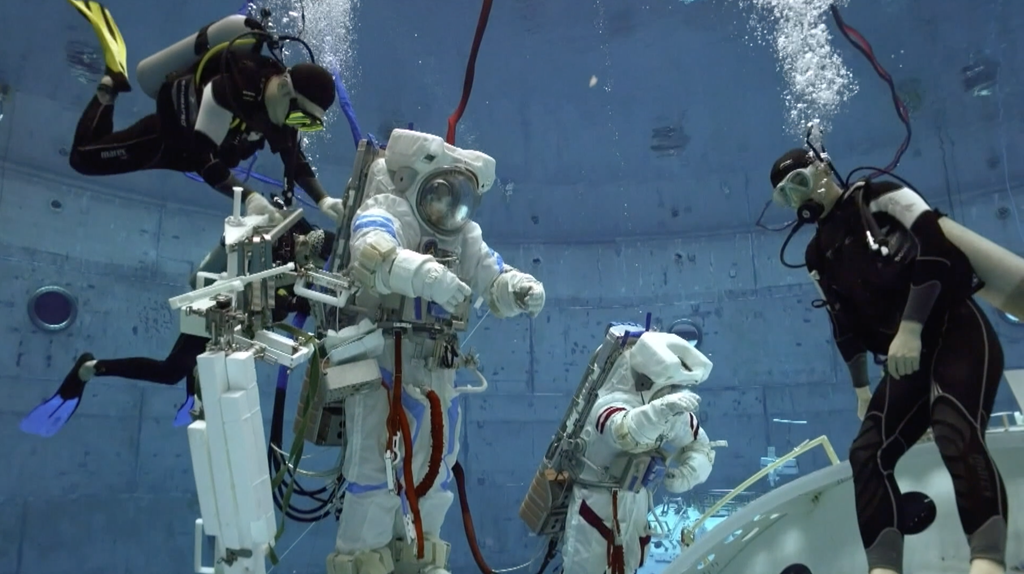02:24

China's space station, now consisting of a core module, a lab, a spacecraft and a cargo ship, is preparing to dock with a second lab to eventually form a T shape and complete its construction.
So far, three crews – Shenzhou-12, -13 and -14 – have been onboard the space station. They have conducted a total of six spacewalks since Tianhe, the station's core module, was sent into low Earth orbit some 400 kilometers above Earth in April last year.

The Shenzhou-14 crew during an extravehicular activity. /CMG
The Shenzhou-14 crew during an extravehicular activity. /CMG
The station is now in the final construction phase. Its first lab module Wentian docked with the core module in late July and the second lab module Mengtian is to be launched soon.
"The biggest structure of the China Space Station now consists of three modules and three spacecraft with a total weight of about 100 tonnes. It will be spectacular once it's completed," said Zhou Jianping, chief designer of China Manned Space Program.
To do this, China has made great efforts in the past 10 years. Chinese scientists have designed, manufactured and tested the various parts of the station.
During this period, the time of docking in space has been shortened from 44 hours to just seven. And that of the stay of Chinese astronauts, or taikonauts, in space has increased from 13 days to half a year.

Chinese scientists work on a key component of China Space Station. /CMG
Chinese scientists work on a key component of China Space Station. /CMG
"Our space station is not flying on its own. There is a complete and powerful aerospace system that guarantees its smooth operation," said Wang Xiang, chief space station commander of China Manned Space Program.
China is preparing to send the fourth crew, three Shenzhou-15 taikonauts, to the station soon after the Mengtian lab mission, and the country is also recruiting a new generation of taikonauts.
"When we select taikonauts, we consider their character and compatibility with the mission, and with each other. So far, the astronaut team of China has three cohorts," Huang Weifen, chief designer of the taikonaut system in China Manned Space Program, told CGTN.

Taikonauts in training. /CMG
Taikonauts in training. /CMG
Now, the taikonauts have conducted several scientific experiments in the first lab module and will do more in the second lab that's to be docked with the station soon.
"For example, some of the experiments aim to study the reaction of plants and animals to microgravity in space. This will help lay the foundations of human life in space in the future," said Zhao Liping, chief designer of Wentian Space Application System from Chinese Academy of Sciences.
The China Manned Space Agency says the country has begun to work with other countries for future missions in the station as well as projects like lunar and Mars probes to benefit all human beings.